Photo

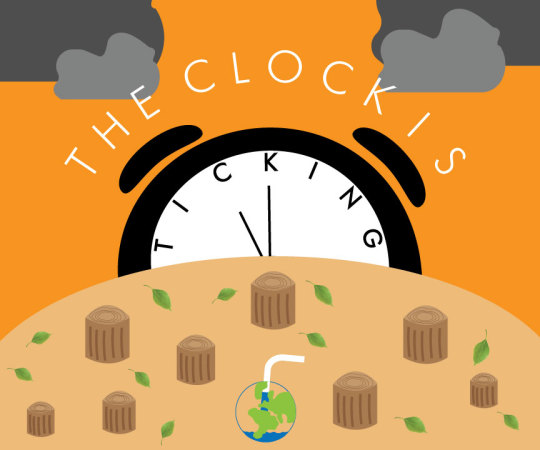
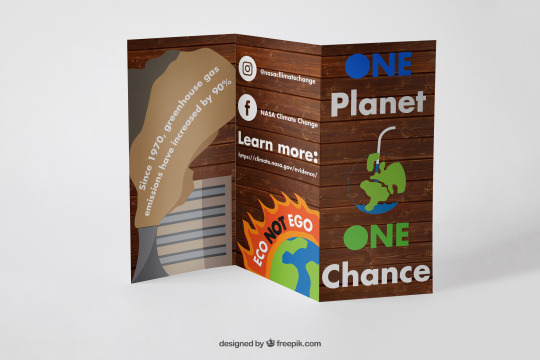
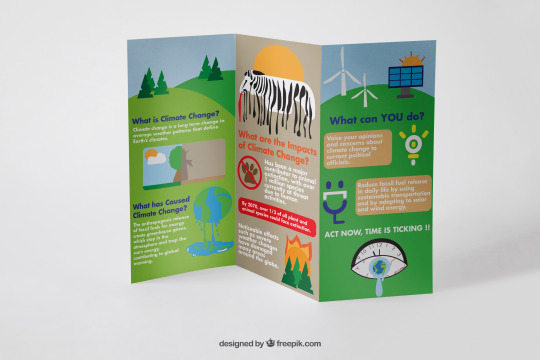
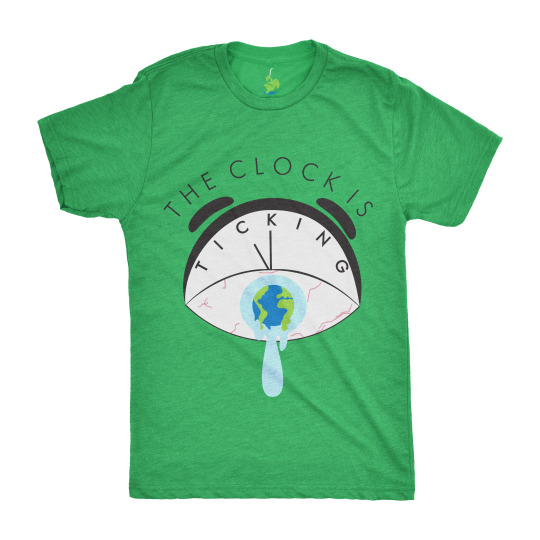
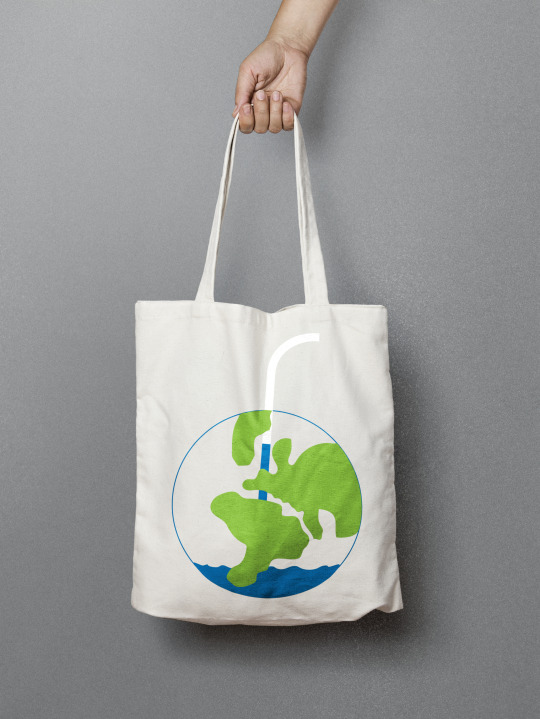
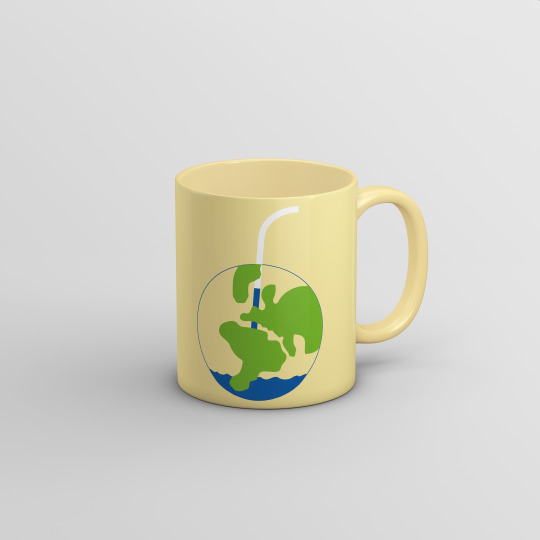
GAC Design Proposal
My design campaign is themed around the topic of human-caused global warming and climate change. I hope for people to become more aware of the damage caused by the human population towards the environment, as well as understand the prevalence of climate change by addressing its issues and consequences. It is important because the growing human population continues to depend and harm the environment to meet resource needs. This has caused the mass emission of greenhouse gases, which has proven to cause environmental damage in many natural ecosystems, species, and even the resources we depend on. It is important because it affects our every-day lives, but we have carried a deliberately evasive mindset in addressing and tackling the issue of climate change and global warming. I believe by actively integrating modern and minimalistic design, people will be attracted to ways that they can decrease the effects of climate change, simply by shifting small every-day activities that can go a long way collectively.
I want to present shocking information about climate change such as the rise of global temperature, its effects in species extinction and ecosystems, as well as other “attention grabbers.” I will integrate logos and general designs that are connected to one another but also provide some individual attention, in order to accurately talk about the issue, its effects, why it's important, and what people can do to help the population combat it. There are many species that have been or are currently showing signs of possible extinction. I think documenting animals and some relevant facts about animal conservation and the general scope of their survival during climate change will put a bigger emphasis in the effects of the issue, as well as providing a good connection towards any external links the viewer can access that will allow them expert research to further educate them about this issue. By prioritizing the use of the Futura font style, as well as a generally the intended message to care for the Earth will be effectively communicated in its typography and design, which will catch and keep the viewer interested in the issue. I will allow my brand to be a cohesive brand/look by using color relationships (mainly complementary to blue and green to represent the Earth) to enhance the looks of the brand, in hopes to make it more in line with the contents of the campaign for flow, as well as integrate appropriate design elements that will further expand the brand to be approachable. This will effectively translate the purpose and meanings of the poster and hopefully become a good inspiration for the viewer to cause action in the climate crisis. I will also put a big emphasis on the individual and renewable energy because they represent hope during this issue, and making them stand out in the campaign will accurately point out the importance of involvement and participation in such times.
I will be further expanding my designs, aiming to add simplistic graphics that will represent specific aspects of climate change, each important in its impacts and longevity of importance while tackling the most important issue of our lifetime.
GAC Advocacy Campaign: Design Rationale
I overall enjoyed implementing design into the issue of global warming and climate change. Programs in the Adobe suite such as Photoshop and Illustrator really allowed me to effectively communicate the urgency that we are all currently facing to combat climate change, as big of an issue as it is. I hope that my campaign was effective and impactful enough to allow someone to just think about the climate crisis and admire the importance they possess in the course of action against this issue. I believe that I was able to accurately represent the scope of climate change and its effects very simply and minimal, which allowed the campaign to become more streamlined and easy to follow.
A part of the project that was the most enjoyable to me was getting down to designing graphics for the campaign. Those were crucial steps in deciding a common ground for the types of figures I wanted to feature in my iconography and typography, all reflected around the Earth in color, as well as the effects of climate change. I wanted the designs to be immersive in a way that they were eye-catching to make the viewer want to know more about what they were looking at. I also believed that the climate crisis has not been recently met with any support from graphic design or other artistic mediums that can explain its effects in our current population. So this was the perfect opportunity to show just how much of an impact art can have on communicating the importance of the issue, as well as encourage others to take it upon themselves to change and take action.
A challenging component of the work was actually deciding which graphics I wanted to feature on the campaign. I made a lot of graphics in the beginning stages of the project, which allowed me to have a lot on my plate in terms of direction, but also made it difficult to make final decisions on iconography and typography. At times, I second-guessed the directions of the project, thinking that too many graphics were being featured. But I realized that this made the project really stand out, as some graphics, especially in the brochure, I considered some of my best work. It was a great and fun experience to get to rely on digital design to carry through the importance of climate change, an issue that I am and others should be more passionate towards, since my career is involved in the science field.
I loved how simplistic and minimal the project ended up looking at its current stage, and I am overall very satisfied to be granted the opportunity to voice the importance of climate change towards people all needed to resolve the issue.
My campaign explained the issue of climate change because it talked about its causes, effects, and was to resolve it. It did that in ways that were easy to recognize and were eye-grabbing to the viewer, to hopefully carry them through the satisfaction of learning something new. The visual identity of the movement was heavily based around getting those iconographies to accurately translate towards the effects of climate change. It was very enjoyable to articulate ideas to bring those conditions of climate change into light with digital software. I think that using the Futura font across the work made the campaign look very connected and harmonious, which was translated in the design as well, staying dear to the issue while not being too exaggerated. To continue this campaign, I would tackle social media platforms in order to spread the important messages climate change possesses. It is necessary within this current generation to care for the Earth and actually take action in the mitigating of anthropogenic fossil fuels. This campaign is hopefully a stepping stone towards greater things within combating climate change.
As much as the process of this work was heavily time intensive, it is satisfying to see the final product as an important reminder of the dangers of climate change and I am staying optimistic for its effects in the near future.
Works Cited
Denchak, Melissa. How Can You Stop Global Warming. Natural Resources Defense Council Inc. July 17 2017. April 19 2021. https://www.nrdc.org/stories/how-you-can-stop-global-warming
Denchack, Melissa. Global Climate Change: What You Need to Know. Natural Resources Defense Council. February 23 2017. April 20 2021.
https://www.nrdc.org/stories/global-climate-change-what-you-need-know
Diego Arugedas Ortiz. Ten Simple Ways to Act on Climate Change. BBC Future. November 4 2018. April 19 2021.
https://www.bbc.com/future/article/20181102-what-can-i-do-about-climate-change
Global Climate Change: Vital Signs of the Planet. National Aeronautics and Space Administration. April 19th 2021. https://climate.nasa.gov/
Global Climate Change: Vital Signs of the Planet: Facts. National Aeronautics and Space Administration. April 19th 2021. https://climate.nasa.gov/effects/
International Union for Conservation of Nature. Species and Climate Change. April 19th 2021. https://www.iucn.org/theme/species/our-work/species-and-climate-change
Rice, Doyce. One-third of all plant and animal species could be extinct in 50 years, study warns. USA Today. February 14 2020. April 19 2021. https://www.usatoday.com/story/news/nation/2020/02/14/climate-change-study-plant-animal-extinction/4760646002/
Schleuning, M., J. Frund, and C. Hof. 2016. Ecological networks are more sensitive to plants than to animal extinction under climate change. Nature Communications: 13965
United Nations. The Health Effects Of Global Warming: Developing Countries Are The Most Vulnerable. April 19 2021. https://www.un.org/en/chronicle/article/health-effects-global-warming-developing-countries-are-most-vulnerable
World Wide Fund for Nature. Causes of Climate Change. April 19 2021. https://www.wwf.org.nz/what_we_do/climateaction/causes_of_climate_change/#:~:text=The%20main%20causes%20of%20climate,absorb%20and%20store%20carbon%20dioxide
Credits/Licenses:
1. Tote Bag Mock Up used from graphicburger.com
2. Other mock ups supplied by professor.
0 notes
Photo
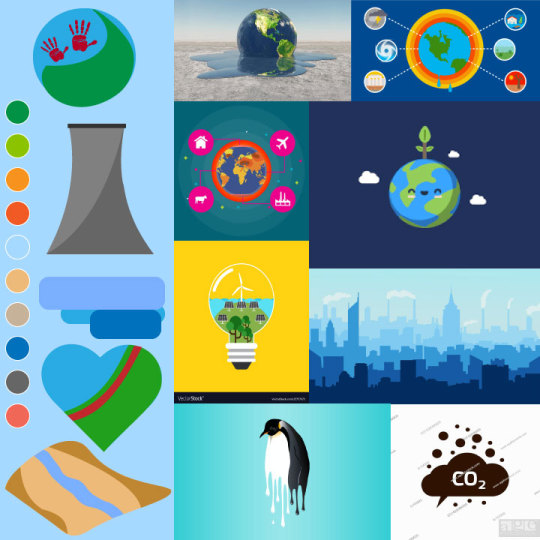
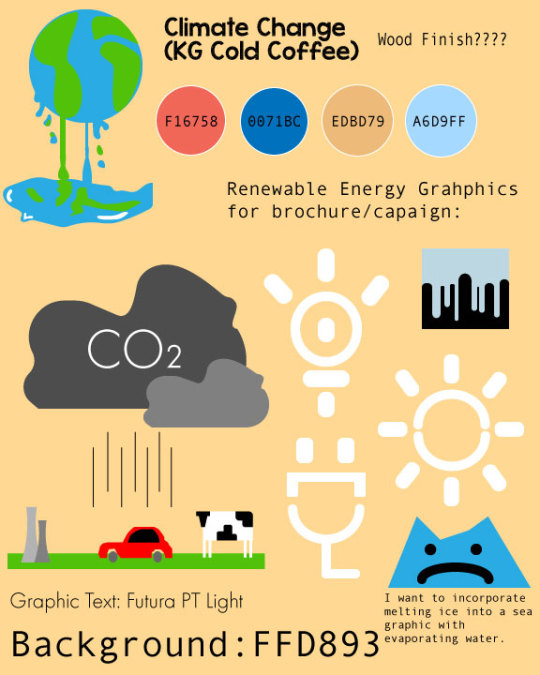

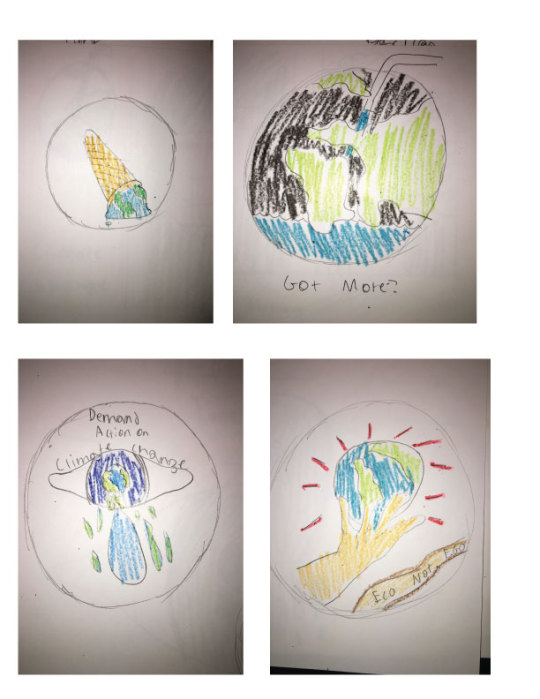
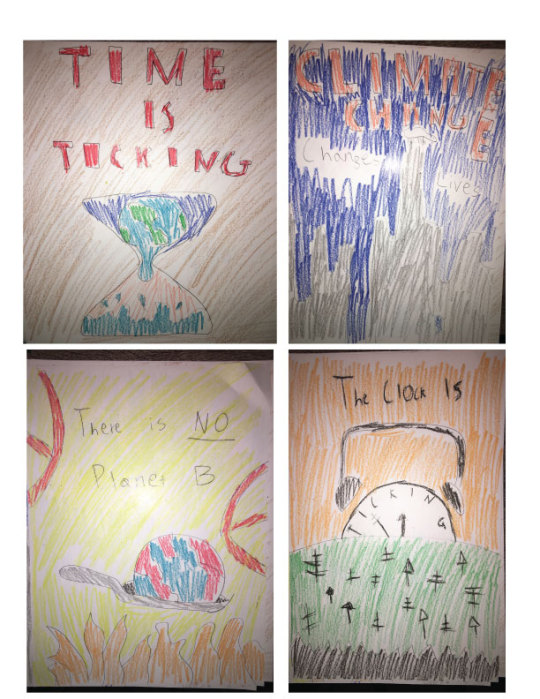
3. Moodboard
4. Style Tile
5. Brochure Sketches
6. Iconography Sketches
7. Wireframe Sketches
0 notes
Text
Guerilla Advocacy Campaign Process Blog: Climate Change
ART225 Graphic Design
1. Project Proposal
My design campaign is themed around the topic of human-caused global warming and climate change. I hope for people to become more aware of the damage caused by the human population towards the environment, as well as understand the prevalence of climate change by addressing its issues and consequences. It is important because the growing human population continues to depend and harm the environment to meet resource needs. This has caused the mass emission of greenhouse gases, which has proven to cause environmental damage in many natural ecosystems, species, and even the resources we depend on. It is important because it affects our every-day lives, but we have carried a deliberately evasive mindset in addressing and tackling the issue of climate change and global warming. I believe by actively integrating modern and minimalistic design, people will be attracted to ways that they can decrease the effects of climate change, simply by shifting small every-day activities that can go a long way collectively.
I want to present shocking information about climate change such as the rise of global temperature, its effects in species extinction and ecosystems, as well as other “attention grabbers.” I will integrate logos and general designs that are connected to one another but also provide some individual attention, in order to accurately talk about the issue, its effects, why it's important, and what people can do to help the population combat it. There are many species that have been or are currently showing signs of possible extinction. I think documenting animals and some relevant facts about animal conservation and the general scope of their survival during climate change will put a bigger emphasis in the effects of the issue, as well as providing a good connection towards any external links the viewer can access that will allow them expert research to further educate them about this issue. I will allow my brand to be a cohesive brand/look by using color relationships to enhance the looks of the brand, in hopes to make it more in line with the contents of the campaign for flow, as well as integrate appropriate design elements that will further expand the brand to be approachable. This will effectively translate the purpose and meanings of the poster and hopefully become a good inspiration for the viewer to cause action in the climate crisis. I will also put a big emphasis on the individual and renewable energy because they represent hope during this issue, and making them stand out in the campaign will accurately point out the importance of involvement and participation in such times.
I will be further expanding my designs, aiming to add simplistic graphics that will represent specific aspects of climate change, each important in its impacts and longevity of importance while tackling the most important issue of our lifetime.
2. Research
Topic: Climate Change
What are the causes of climate change?
WWF: Causes of Climate Change
The main causes of climate change are:
Increased use of fossil fuels
Deforestation
Increasingly intensive agriculture
Rise of global temperatures
Humanity’s increased use of fossil fuels – such as coal, oil and gas to generate electricity, run cars and other forms of transport, and power manufacturing and industry
Deforestation – because living trees absorb and store carbon dioxide
Increasingly intensive agriculture – which emits greenhouse gases like methane and nitrous oxide
From 1906-2005, the average global temperature rose by 0.74ºC, with most of that warming occurring since 1970. By 2015, the average global temperature had warmed by over 1ºC since pre-industrial times. Sixteen of the 17 warmest years on record have been in 21st century.
NRDC: Global Climate Change: What You Need to Know
- Climate change is a significant variation of average weather conditions
- Tracked and recorded through paleoclimatology data from natural sources such as ice cores, tree rings, corals, and ocean and lake sediments.
- Caused by the refraction of the sun’s rays.
- The prevention of the absorption of the sun’s rays by greenhouse gases can have various climate effects.
- Human caused greenhouse gases is the main contributor to climate change and global warming, adding a heating layer on the sky that resides and warms many natural processes.
- Greenhouse gases (CO2, methane, SO2) have contributed to a 40% increase in the atmosphere’s share of greenhouse gases since pre-industrial times.
What are the direct consequences of climate change?
Climate Change - Signs from the Planet
Since 1880, global temperatures have risen 2.1 degrees F.
Nineteen of the warmest years in human history occurred since 2000.
Carbon dioxide levels are at their highest in 650,000 years.
A 13.1 length decrease of global ice melt occurs every decade.
Arctic sea ice shrank at its lowest in 2012.
Arctic polar ice caps are losing mass, according to satellite data.
Climate Change - Sings from the Planet - Facts
- Average precipitation has risen and is expected to rise, while winters and weather conditions are getting more harsh.
- Rising temperatures will decrease soil moisture, and crop production.
- Sea levels have risen due to glacial ice melt, and combined with tides to cause regional flooding,
= Increased heat, drought and insect outbreaks, all linked to climate change, have increased wildfires. Declining water supplies, reduced agricultural yields, health impacts in cities due to heat, and flooding and erosion in coastal areas are additional concerns.
IUCN: Species and Climate Change
The ways in which climate change is expected to affect species are multiple and complex, but are generally thought to include:
- Loss or degradation of important habitats and microhabitats.
- Changing of environmental thresholds e.g. temperature, water availability/quality beyond those that a species can tolerate.
- Loss of important interactions between two unrelated species, or the arrival of new, negative ones e.g. disease.
- The disruption of environmental cues (e.g. for breeding or migration).
- The direct loss of individual organisms, or even populations, as a result of extreme events.
USA TODAY: One-third of all plant and animal species could be extinct in 50 years, study warns.
- Over 1 million species are at risk of extinction due to human activities.
- About 50% of the species had local extinctions if maximum temperatures increased by more than 0.9 degrees Fahrenheit, and up to 95% if temperatures increased by more than 5.2 degrees Fahrenheit.
Schleuning et al. 2016.
- Animal species that interact with a low diversity of plant species have narrow climatic niches and are most vulnerable to climate change.
- Impacts of climate change on biodiversity can be amplified via extinction cascades from plants to animals in ecological networks.
- Species traits that favour biotic generalization, for example, large body size, may also favour the widespread distribution of animal species across a wide climatic range. Thus, climatic niche breadth and biotic specialization may be indirectly linked via species traits.
Climate change and third world countries:
- IPCC (Intergovernmental Panel on Climate Change) predicts climate change will worsen human health conditions such as malaria, and other insect-borne infections, especially in tropical region.
- The IPCC report estimates that approximately 75 million to 250 million people in Africa will be without adequate water and will face food shortages by 2020, as crop productivity will decline by about 50 per cent. Rising temperatures could also result in food shortages for 130 million people in Asia.
- Increased global warming can also pose a threat to national security, affecting food security, which, in turn, can lead to resource conflicts.
What can be done to decrease the effects of/can combat climate change?
NRDC: How can you stop global warming?
1. Voice opinions and bring concerns about climate change directly to elected officials.
2. Power essential shelter with renewable energy resources (solar, wind).
3. Weatherize and invest in energy-efficient home improvements.
4. Investing in energy-efficient appliances.
5. Reduce water waste.
6. Produce less food waste.
7. Conserve energy.
8. Drive/transport energy efficiently.
9. Rethinking public transit such as trains, airplanes, and automobiles.
10. Decreasing carbon footprint by reducing the use of products that produce greenhouse gases to be made.
BBC. Ten Simple Ways to Act on Climate Change.
- Limiting the use of fossil fuels such as natural gas and coal and replacing them with cleaner sources of energy such as renewables.
- “We need to cut CO2 emissions almost in half (45%) by the end of the next decade,”
- Changing the running of industries and market production policies.
- Going car-free or effectively using more cleaner alternatives is the most effective approach against climate change on a social level.
- Renewables such as solar and wind are becoming cheaper across the world.
- Solar, geothermal, bioenergy, hydropower and onshore wind, will be on par with or cheaper than fossil fuels by 2020. Some are already more cost-effective
- The cost of utility-scale solar panels has fallen 73% since 2010
By reducing your consumption of animal protein by half, you can cut your diet's carbon footprint by more than 40%.
Works Cited
Denchak, Melissa. How Can You Stop Global Warming. Natural Resources Defense Council Inc. July 17 2017. April 19 2021. https://www.nrdc.org/stories/how-you-can-stop-global-warming
Denchack, Melissa. Global Climate Change: What You Need to Know. Natural Resources Defense Council. February 23 2017. April 20 2021.
https://www.nrdc.org/stories/global-climate-change-what-you-need-know
Diego Arugedas Ortiz. Ten Simple Ways to Act on Climate Change. BBC Future. November 4 2018. April 19 2021.
https://www.bbc.com/future/article/20181102-what-can-i-do-about-climate-change
Global Climate Change: Vital Signs of the Planet. National Aeronautics and Space Administration. April 19th 2021. https://climate.nasa.gov/
Global Climate Change: Vital Signs of the Planet: Facts. National Aeronautics and Space Administration. April 19th 2021. https://climate.nasa.gov/effects/
International Union for Conservation of Nature. Species and Climate Change. April 19th 2021. https://www.iucn.org/theme/species/our-work/species-and-climate-change
Rice, Doyce. One-third of all plant and animal species could be extinct in 50 years, study warns. USA Today. February 14 2020. April 19 2021. https://www.usatoday.com/story/news/nation/2020/02/14/climate-change-study-plant-animal-extinction/4760646002/
Schleuning, M., J. Frund, and C. Hof. 2016. Ecological networks are more sensitive to plants than to animal extinction under climate change. Nature Communications: 13965
United Nations. The Health Effects Of Global Warming: Developing Countries Are The Most Vulnerable. April 19 2021. https://www.un.org/en/chronicle/article/health-effects-global-warming-developing-countries-are-most-vulnerable
World Wide Fund for Nature. Causes of Climate Change. April 19 2021. https://www.wwf.org.nz/what_we_do/climateaction/causes_of_climate_change/#:~:text=The%20main%20causes%20of%20climate,absorb%20and%20store%20carbon%20dioxide
0 notes
Photo
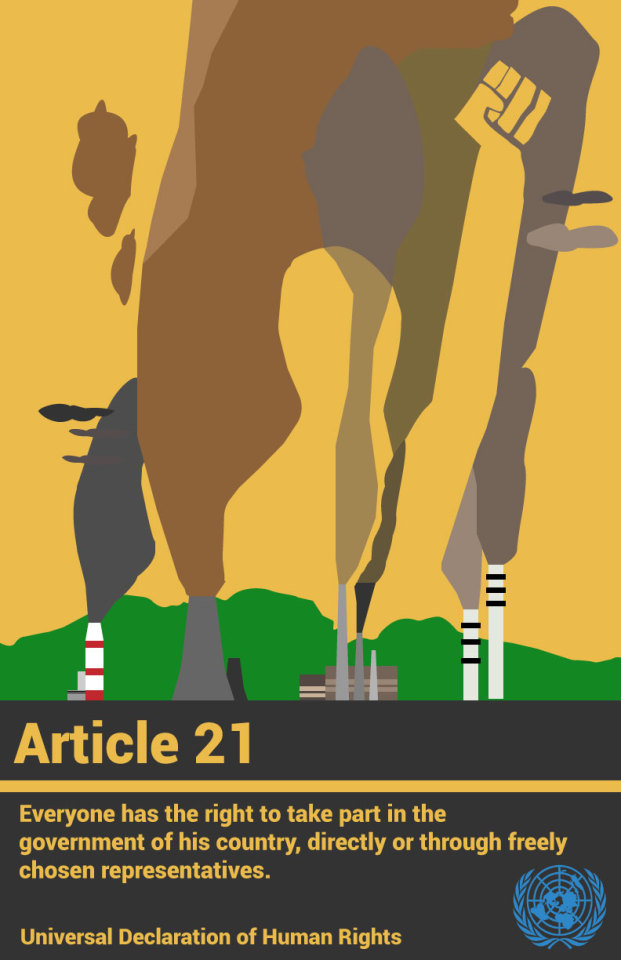
ART225 Graphic Design Human Rights Poster:
My focus throughout this project was to accurately portray and communicate the visual concept of climate change and global warming. Since it is one of the biggest issues that faces our society, I found it a responsibility to globalize this poster, and make it understandable for all angles of life and people. Since it is an issue that affects all of us, I found it appropriate.
When looking for an article from the UN’s Declaration of Human Rights to design from, I was looking for an article in connection to government and general protest. I thought this because the humans are responsible for the actions, we take towards climate change, and It is up to us to change the fate of the planet. Article 21 fit the right theme. I also wanted the human figure to relate and be a part of the figure itself, leading to the human outline becoming an extension of the environment.
This poster was solely based around the pen tool of Adobe Illustrator, an important tool to make creative shapes and malleable outlines that can be constantly changed. Compositionally, I wanted a human silhouette to be the focus of the poster, as it lies in the middle of massive amounts of smoke and emissions. The use of negative space came to me as I was making the project, being a main component of the background, as well as an indicator of the human silhouette. By making the silhouette the same color as the background, I thought it made them connect and communicate effectively without giving away too much information. I picked it because of my passion for the scientific world, and the prevalence of climate change in our society.
The poster I think accurately portrayed the article, since it shows the role of the human society towards the decisions it makes. Highlighting the importance of protest and one’s voice was a very effective approach towards communicating with the audience, as well making this poster have a global aspect to it, where people can look and it and relate to it, or at least understand its message. Because of this, the text and imagery was unified to be interpreted by a non-english speaker, since it uses many devices or figures recognized by many, such as powerplants, fields, and elaborate text.
Finally, researching for similar posters really helped in getting ideas, as well as being a great source of brain storming for sketches and eventually the poster itself. It was great to see the wide application of these articles by different people and their respective designs.
Finally, the class critique before the final poster was very very helpful, since it made me realize the corrections I had to make for the final. I was reminded that I needed to change the scale of the work, as well as the anatomical elements of the human silhouette to make it clearer that it is a human raising a fist.
Overall a very fun and engaging project.
Best,
Marios Argitis
2 notes
·
View notes
Photo
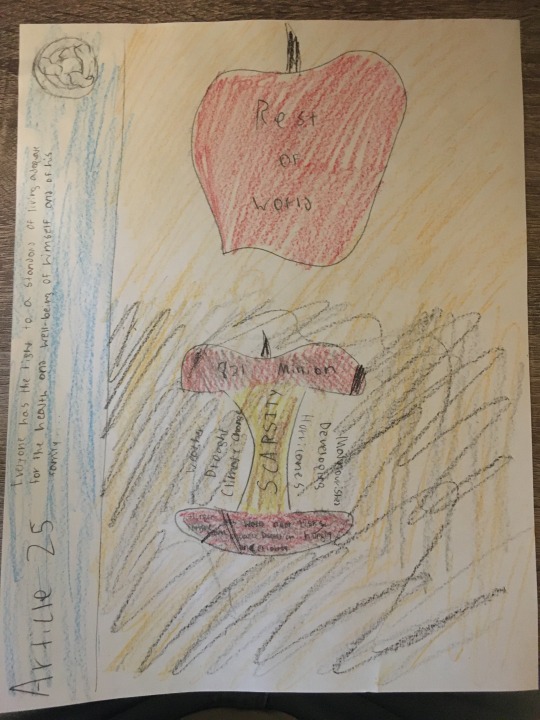
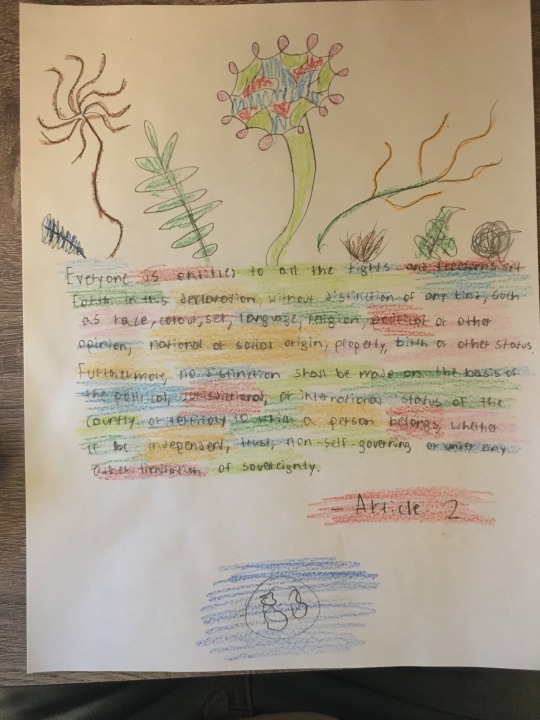



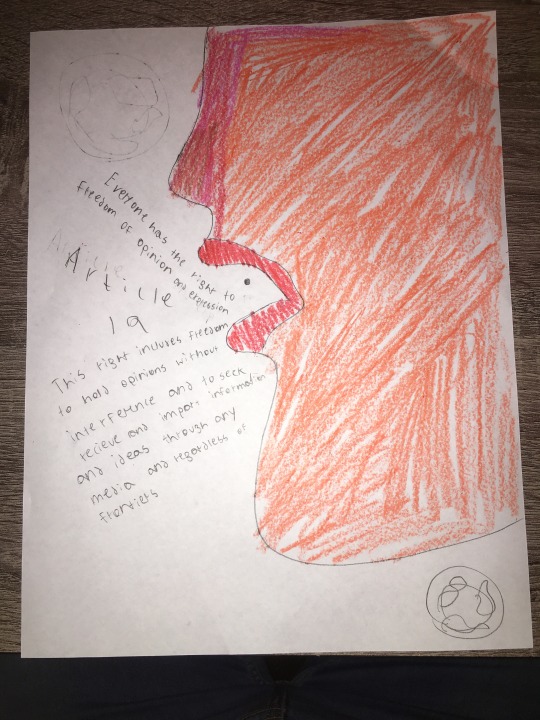
ART225 Human Rights Poster
Some ideas for the most recent project in Graphic Design. I wanted to integrate something that accurately represents the articles from the UN’s declaration of human rights. The one that I am leaning to the most are the last three, specifically article 21 because I have wanted to relate climate change and global warming into this project somehow and I feel like that sketch is the most accurate depiction. Enjoy ^
Best,
Marios Argitis
0 notes
Photo

ART225: Photoshop Replication Project
For this project, I replicated Bradbury Thompson’s Victory Magazine Spread piece, made in 1953 for the graphic arts publication, “Westvaco Inspiration for Printers.” At first glance, recreating this piece seemed very daunting, due to the many artistic blends of text, shapes, and contrasting figures. I found it fairly difficult to replicate this work, mainly because of the intricate line and circle work. Getting the semicircles to perfectly align and connect with each other, also making sure the text and arrows were lined up correctly was a challenge. I guess it made it different because the digital platform did not allow for the applied drawing and intricate shape work, which can be measured and drawn accurately by hand, which would have been better. There were many complications with photoshop, trying to use the marquee tool and expanding the circles was not the most effective strategy. Due to these complications, I definitely gave the original work more appreciation because of its intense attention to details, while trying to be simple yet complex. Bradbury Thompson had such an eye for making things flow together in ways that are harmonious and interesting. Being tasked to replicate one of his famous works was an unforgettable task. It just goes to show the hours dedicated to making something like this by hand and printing. I found the text of the work to be very interesting. I was wondering how the arrows and the eyes connected to our capacity for war and conquering. It was a very interesting excerpt that Thompson used that made me think about his intentions in the work even more. If I had more time, I would try to improve the appearance of the semi-circles, as some of them it was very hard to get them to look the same as the middle ones without over-stretching or complicating them. I would also try to make the arrows become more transparent against the semicircles to make them more appealing and look less on the outside of the circles. Can’t wait to see what is next.
Sources/Licenses:
Original Work -
“Bradbury Thompson's Westvaco.” The Alexander W. White Consultancy, 26 June 2017, alexanderwwhite.wordpress.com/bradbury-thompsons-westvaco-inspiration-for-printers-nos-194-202-and-210/.
Horse Photo -
https://www.clipartkey.com/search/knight/5/
Best,
Marios
0 notes
Photo

ART225 Graphic Design
Reproduction Project - Bradbury Thompson’s “Victory Magazine Spread”
The “Victory Magazine Spread” is a graphic magazine piece featured in the promotional journal and graphic arts publication, Westvaco Inspirations for Printers issue No.194, part of the West Virginia Pulp & Paper Company. The piece was made in 1953 by famous American graphic designer, Bradbury Thompson, known for his famous work in modernistic typography with clever blends of historical illustrations and color. Most of his works were created with a CMYK color pallet. His experience in printing gave him a background in printing channels and ways of effectively using color. He also put a big emphasis on typography, integrating different arrangements of wording to create movement, emphasis, and to bring the work to life.
“Victory Magazine Spread” integrates arrow illustrations pointing towards targets made of solid color. It also features an excerpt about America’s perception of war and its motives, complemented with a human perspective, seen in the nose and the eyes. He likely chose this device to make the piece relatable to the viewer, using a common representation of violence such as weapons (arrows). He borrowed elements of primitive art, turning them into original works by blending modern and traditional inspirations. Thompson made the piece by mixing typography, photography, and color. He used his iconic 26-letter alphabet, established in his pieces by size only to make writing more intuitive and easier to read. There is a great amount of detail put into the typography of the piece, as well as the relation of text with the iconography of the work. As one of the most accomplished and recognized art directors and graphic designers of the last century, Bradbury Thomas’ combination of modernist visual information and typography is a method of graphic design forever imprinted in the world of art.
“Bradbury Thompson.” RIT, www.rit.edu/carycollection/bradbury-thompson.
“Bradbury Thompson's Westvaco.” The Alexander W. White Consultancy, 26 June 2017, alexanderwwhite.wordpress.com/bradbury-thompsons-westvaco-inspiration-for-printers-nos-194-202-and-210/.
“Creative Titans: Bradbury Thompson, the Master of Typography.” Works Design Group, 19 Oct. 2018, www.worksdesigngroup.com/bradbury-thompson/#:~:text=As%20the%20designer%20of%20more,to%20create%20one%20cohesive%20design.&text=Some%20of%20Thompson's%20most%20popular,extensive%20contemporary%20postage%20stamp%20designs.
Gelder, Lawrence Van. “J. Bradbury Thompson Dies; Designer and Art Director, 84.” The New York Times, The New York Times, 4 Nov. 1995, www.nytimes.com/1995/11/04/arts/j-bradbury-thompson-dies-designer-and-art-director-84.html.
“Inspired Design Decisions With Bradbury Thompson: The Art Of Graphic Design.” Smashing Magazine, 18 Aug. 2020, www.smashingmagazine.com/2020/08/inspired-design-decisions-bradbury-thompson/.
Best,
Marios Argitis
0 notes
Photo

ART225 - Intro to Graphic Design
Photoshop Exercises: Clipping Masks and Layering
This project was a really good source of getting used to Photoshop since a long time. I gathered photos of wildlife and landscapes and blended them together in a photo collage, while using masking and the eraser tool to make them interconnected more than they were. I chose to include many opposite environments, especially with the sky, to appreciate the intertwining of nature and its vast conditions and landscapes.
A new tool I found useful was the Marquee tool, capable of cutting out a part of an image while seeing parts of the above layer in the empty space. It allowed for the photos to come together in a fluid way.
An aspect of photoshop I would like to grow in is masking. Masking is a very good way of placing a foreign object or image and blending it enough where it seems natural in the original image. I have seen it being used in many photography edits and it looks like a great way to bring photos to life.
I think my biggest obstacle with the program is getting used to shortcuts on the keyboard. I want to become familiar with them in order to ease the design process and make the tools more accessible to me. I would also like to experiment more with other tools in order to see their full effects in images and designs. This project was overall very fun to put together and I am looking forward for what is to come next.
Best,
Marios Argitis ^^
0 notes
Text
Bio
Hi!! My name is Marios Argitis. I am a senior with a major in Environmental Science and Ecology and a minor in Studio Art. I majored in Environmental Science due to my strong love for nature. I have been outside for as long as I could remember. I also like animal life and observing nature as it is intended, peacefully with no intervention. I am studying studio art due to my love for photography and putting an eye towards something. I have always loved making life interesting, and doing that through a lens has made life that much more fun.
Music is also a very important part in my life, influencing my moods and motivations towards every day. My favorite artist is Twenty One Pilots. They have influenced me and I have always appreciated their art and aesthetic.
In my spare time, I like taking a walk outside, maybe take my camera with me to do some wildlife photography in the quiet forests nearby, or take my bike to new places.
I have a growing love for digital design and I can’t wait to learn more. Looking forward to every class.
Best,
Marios Argitis ^^^
1 note
·
View note